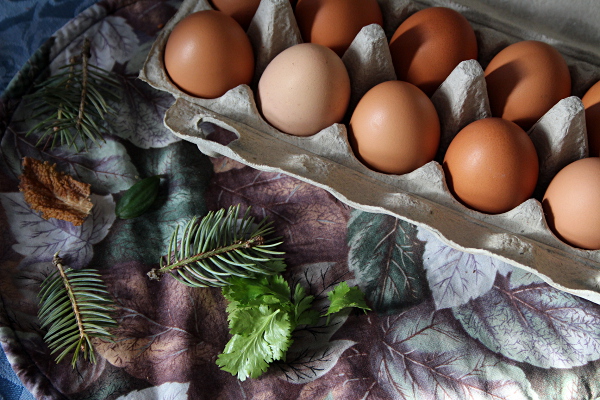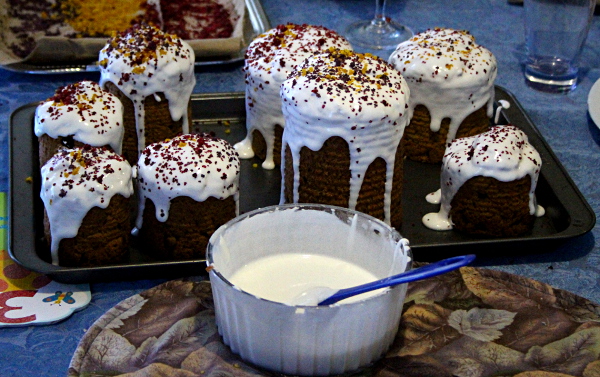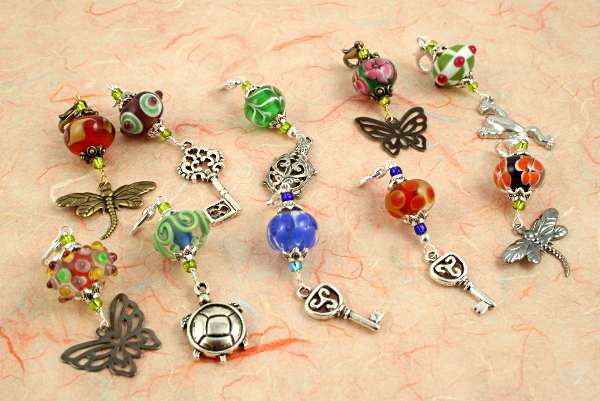It has been a lovely day this Friday before Easter. The weather has been unusually warm, with a light refreshing breeze, soft sunshine, and birds hesitantly picking at the sunflower seeds in the bird feeder under the watchful eye of our cat. I’ve spent some time replanting potted aloe and various other house greenery and collecting soil from the towers to start various seeds. The kids have been having lots of fun outside for the first time this spring, playing ball, creating Knight of the Realm stories, rescuing available neighbourhood ladybug princesses, and remembering how to shoot a bow.
In between planting seeds and playing football, I’ve gathered a few leaves and evergreen branch tips to attempt an egg-colouring experiment under the category of “why not?”. The procedure required minimum preparation and produced pleasant results with minimum effort. Last year, we’ve used turmeric, blueberries, beets, and onion skins to colour eggs. This year, I’ve decided to stick to onion skins only and try creating patterns using leaves and evergreen needles.
Supplies required
- 12 eggs
- Small leaves – one or two for each egg, cilantro/parsley/dill soft leaves work best
- Skins of 6 onions
- Approximately 4 cups of water
- 2 teaspoons of salt
- 1 tablespoon of white vinegar
- An old pair of stockings, a pantyhose, or cheesecloth, cut up into 12 pieces
- Hair elastics or another way of tying up the fabric
Steps:
- Soak the raw eggs in room temperature water for 20-30 minutes to bring them to room temperature to lower the probability of them bursting during boiling
- Rinse the eggs to make the surface clean of oils and thus more receptive to absorbing colour
- Put the onion skins, salt and vinegar into water and boil it for 30-40 minutes (can be done in parallel with step 1)
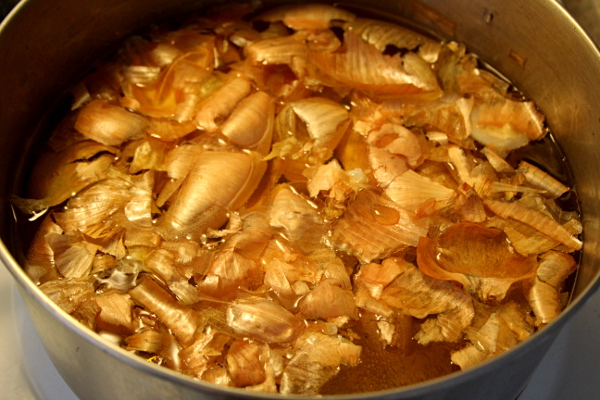
- Apply a wet leaf to each egg, slip the egg into a piece of pantyhose/cheesecloth in such a way that the leaf is undisturbed, tie up the fabric
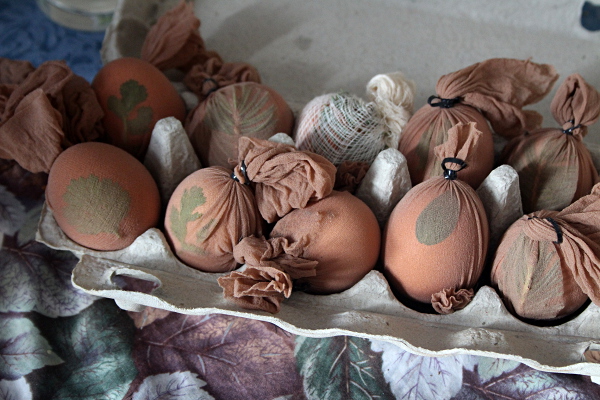
- Once the onion skins have boiled for the designated amount of time, lower the eggs into the boiling liquid, boil for 15-20 minutes
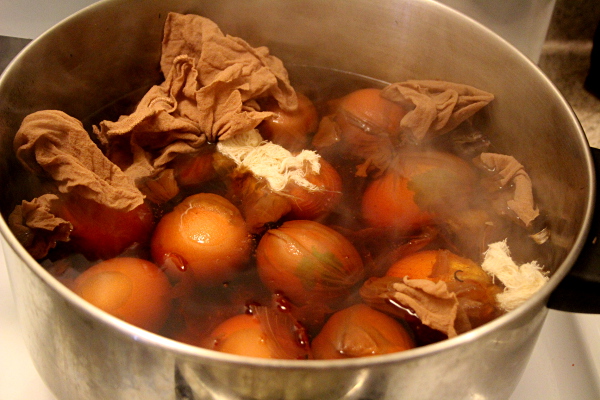
- Drain the boiling water and fill the pot with cold water, letting the eggs cool
- Remove the eggs from the fabric and observe the results
- If you like the eggs to be shiny, wipe them with coconut or olive oil
For this minimal amount of effort, those eggs that had cilantro leaves applied to them came out with lovely leaf patterns. The evergreen needles were too stiff and did not adhere well to eggs, as was the dried kale leaf and the ivy leaf — they have produced a lighter area without any distinct pattern. Even without patterns though, I keep marveling at the rich golden brown colour of the eggs dyed with onion skins. Most of the eggs were on the darker brown side to begin with, and they have turned out beautifully.






